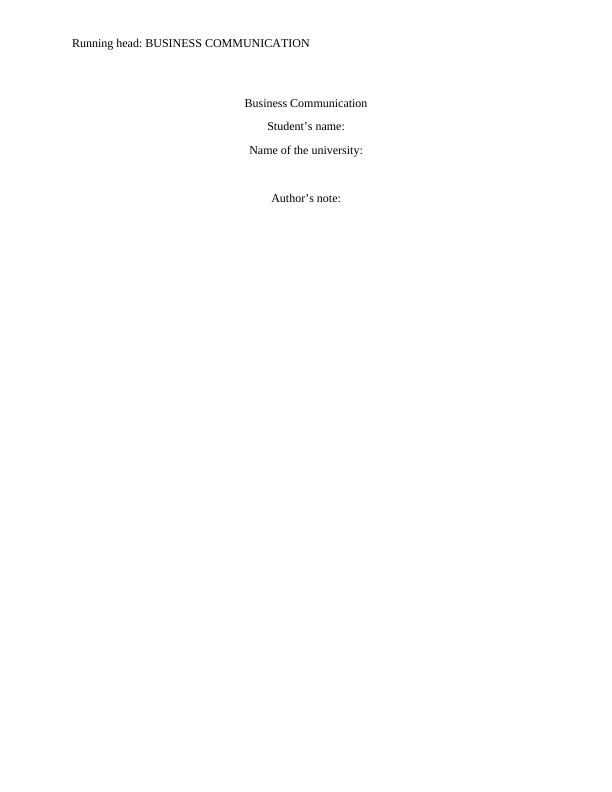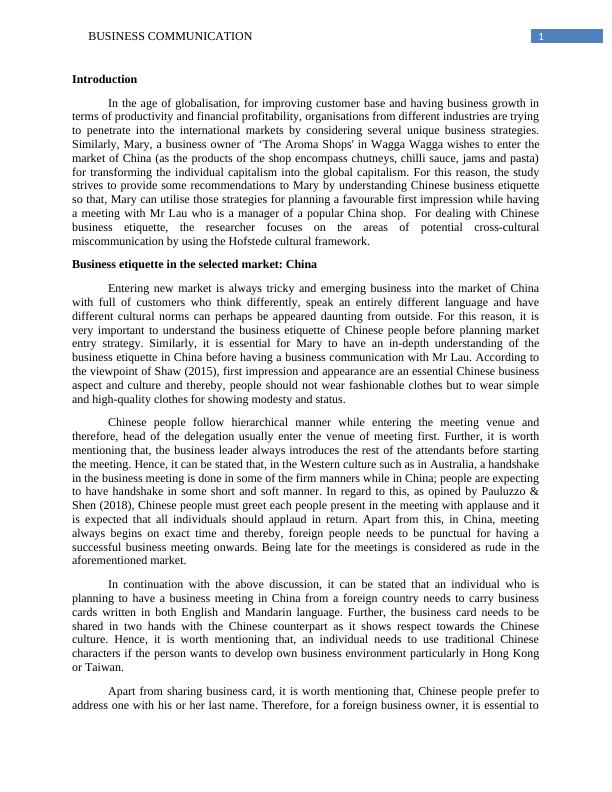Understanding Chinese Business Etiquette: A Cross-Cultural Analysis Using Hofstede Model
Added on 2023-06-13
5 Pages2298 Words202 Views
End of preview
Want to access all the pages? Upload your documents or become a member.
Cross-Cultural Communication in Business: A Case Study of China and Australia
|5
|2215
|123
Communication in Business: Chinese Business Etiquette and Cross-Cultural Miscommunication
|6
|2174
|100
Cross-cultural Miscommunication (Chinese Business Etiquette)
|9
|2119
|367
Cross Cultural Communication and Business Relation
|6
|2112
|77
Chinese Business Etiquette: Tips for a Successful Meeting with Mr. Lau
|8
|2046
|405
Chinese Business Etiquette Analysis as per Hofstede’s Cultural Dimension
|7
|2027
|178

